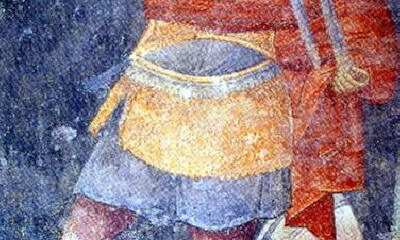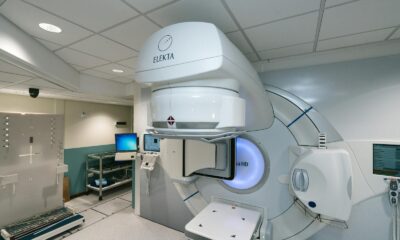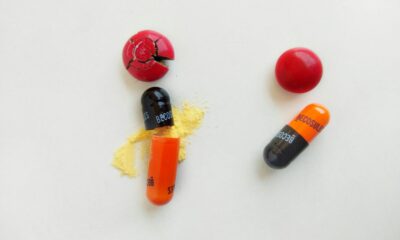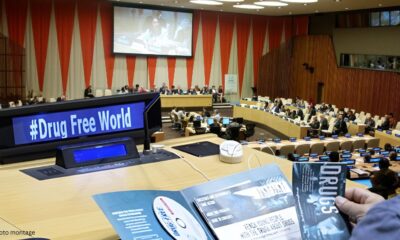Health & Society
WHO launches a global health pass inspired by the European Covid digital certificate
The World Health Organization (WHO) and European Commission have announced the launch of a landmark digital health partnership with a global health pass.
In June 2023, WHO will take up the European Union (EU) system of digital COVID-19 certification to establish a global health pass that will help facilitate global mobility and protect citizens across the world from on-going and future health threats, including pandemics. This is the first building block of the WHO Global Digital Health Certification Network (GDHCN) that will develop a wide range of digital products to deliver better health for all.
“Building on the EU’s highly successful digital certification network, WHO aims to offer all WHO Member States access to an open-source digital health tool, which is based on the principles of equity, innovation, transparency and data protection and privacy,” said Dr Tedros Adhanom Ghebreyesus, WHO Director-General. “New digital health products in development aim to help people everywhere receive quality health services quickly and more effectively”.
Based on the EU Global Health Strategy and WHO Global strategy on digital health, the initiative follows the 30 November 2022 agreement between Commissioner Kyriakides and Dr Tedros to enhance strategic cooperation on global health issues. This further bolsters a robust multilateral system with WHO at its core, powered by a strong EU.
“This partnership is an important step for the digital action plan of the EU Global Health Strategy. By using European best practices we contribute to digital health standards and interoperability globally–to the benefit of those most in need. It is also a powerful example of how alignment between the EU and the WHO can deliver better health for all, in the EU and across the world. As the directing and coordinating authority on international health work, there is no better partner than the WHO to advance the work we started at the EU and further develop global digital health solutions,” said Stella Kyriakides, Commissioner for Health and Food Safety.
This partnership will include close collaboration in the development, management and implementation of the WHO GDHCN system, benefitting from the European Commission’s ample technical expertise in the field. A first step is to ensure that the current EU digital certificates continue to function effectively.
“With 80 countries and territories connected to the EU Digital COVID-19 Certificate, the EU has set a global standard. The EU certificate has not only been an important tool in our fight against the pandemic, but has also facilitated international travel and tourism. I am pleased that the WHO will build on the privacy-preserving principles and cutting-edge technology of the EU certificate to create a global tool against future pandemics,” added Thierry Breton, Commissioner for Internal Market.
A global WHO system building on EU legacy
One of the key elements in the European Union’s work against the COVID-19 pandemic has been digital COVID-19 certificates. To facilitate free movement within its borders, the EU swiftly established interoperable COVID-19 certificates (entitled ‘EU Digital COVID-19 Certificate’ or ‘EU DCC’). Based on open-source technologies and standards it allowed also for the connection of non-EU countries that issue certificates according to EU DCC specifications, becoming the most widely used solution around the world.
From the onset of the pandemic, WHO engaged with all WHO Regions to define overall guidelines for such certificates. To help strengthen global health preparedness in the face of growing health threats, WHO is establishing a global digital health certification network which builds upon the solid foundations of the EU DCC framework, principles and open technologies. With this collaboration, WHO will facilitate this process globally under its own structure with the aim to allow the world to benefit from convergence of digital certificates. This includes standard-setting and validation of digital signatures to prevent fraud. In doing so, WHO will not have access to any underlying personal data, which would continue to be the exclusive domain of governments.
The first building block of the global WHO system becomes operational in June 2023 and aims to be progressively developed in the coming months.
A long-term digital partnership to deliver better health for all
To facilitate the uptake of the EU DCC by WHO and contribute to its operation and further development, WHO and the European Commission have agreed to partner in digital health.
This partnership will work to technically develop the WHO system with a staged approach to cover additional use cases, which may include, for example, the digitisation of the International Certificate of Vaccination or Prophylaxis. Expanding such digital solutions will be essential to deliver better health for citizens across the globe.
This cooperation is based on the shared values and principles of transparency and openness, inclusiveness, accountability, data protection and privacy, security, scalability at a global level, and equity. The WHO and the European Commission will work together to encourage maximum global uptake and participation. Particular attention will be paid to equitable opportunities for the participation by those most in need: low and middle-income countries.
Health & Society
The benefits of bee-polen – the food that gives us everything we need
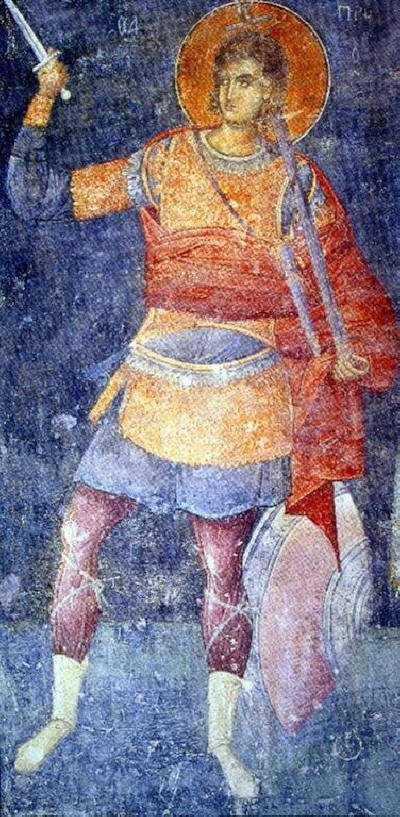
The pollen originates from those parts of the plant that are particularly important for the development of the plant species. Therefore, it contains substances of high biological value. Its composition varies greatly depending on the plants from which it is harvested. Fresh pollen contains the following ingredients:
• protein substances (22-40%), including the amino acids valine, tryptophan, phenylalanine, lysine, methionine, leucine, isoleucine, trevonine, histidine, arginine, glutamic, aspartic acid, etc.
• Sugars in the form of nectar carbohydrates (30 – 60 %)
• Vitamins. Bee pollen is particularly rich in vitamins that are absorbed by the bees’ body. Vitamins B1, B2, B3, B6, B7, B8, B9, B12, C, provitamin A (converted in the body into vitamin A), vitamin D, etc. have been identified. Rutin (vitamin P) reaches 60 mg per 100 g of pollen. It is of particular importance for the human body, as it increases capillary resistance
• Enzymes. Amylase, invertase, catalase, phosphatase, etc., which catalyze various chemical processes in the body, have been identified.
• Antibiotic substances. They come from both plants and bees. They stop the development of bacteria in the intestines. They are especially active against gram-negative bacteria, such as Escherichia coli, Salmonella ehteritidis and Proteus vulgaris, which are the causes of gastrointestinal diseases and urinary tract infections.
• Mineral substances. Potassium, calcium, phosphorus and magnesium are in the greatest amount. Manganese, zinc, cobalt, barium, silver, gold, vanadium, tungsten, iridium, mercury, molybdenum, chromium, cadmium, strontium, palladium, platinum and titanium have been found in small quantities. The amount of mineral salts is greater in pollen than in honey.
• Lipids, aromatic and pigment substances.
• Biologically active substances. Bee pollen contains from 0.60 to 4.87% nucleic acids, ribonucleic acids being more than deoxyribonucleic acids.
• Bee pollen is rich in the essential amino acids for life, which many times surpass the amino acids contained in beef, eggs and cheese.
If there were no other food sources containing amino acids, pollen could provide the human body with the minimum need for them through the average dose of 15 g per day. For example, 2 tablespoons of pollen equals the protein content of 140 g of pork steak, but without bad fats, chemicals and animal hormones.
Therapeutic action and application:
On the one hand, pollen has a high nutritional value – no other natural product can compete with it, but at the same time it is also a complete food thanks to its diverse ingredients. Pollen should also be considered as a natural “medicine-concentrate”, based on the large amount of enzymes, vitamins, antibiotic substances, trace elements, flavonoids, etc. contained in it – all of natural origin and in a favorable ratio with each other.
Pollen is used in the treatment of:
• Diseases of the small and large intestine.
• Possibility of using the pollen and perga in the treatment of diabetes, as it stimulates the release of insulin.
• Lowers the level of cholesterol, which is used in the treatment of atherosclerosis.
• Pollen is characterized by a low sodium content, but contains a lot of magnesium and potassium, which makes it suitable for the treatment of cardiovascular diseases.
• Pollen contains iron, which means that it can be used in the treatment of anemia.
• Thanks to the rich content of iodine, the pollen can be used in the prevention of endemic goitre.
• The pollen has a well-expressed anabolic (building) effect.
• It is used in the treatment of inflammatory and degenerative diseases of the liver.
• It has a normalizing effect on the nervous system.
Very good results are known in the treatment and prevention of pathological processes of the prostate gland such as hypertrophy. Bee pollen is used for gastrointestinal diseases, asthenia and states of mental and physical fatigue, which appeared as a result of various diseases, overloads, exhaustion (age-related and neurotic), etc. It is used for lack of appetite in children, delayed growth and delayed teething; it is included in the complex therapy of cardiovascular diseases, in the prevention and treatment of atherosclerosis, in liver diseases, climacteric disorders, etc.
Contraindications for treatment with bee pollen are allergy to it and severe damage to the renal parenchyma.
Pollen is considered to be completely harmless to the body.
It is suitable for treating liver diseases, atherosclerosis, lipidemia (increase in fat). With long-term treatment, it improves the condition of patients with prostate adenoma and prostatitis, depressive conditions and chronic alcoholism. An effective means of general strengthening of the organism.
Store in a dark and cool place.
Admission-
In the evening before going to bed, take a glass of water with one teaspoon of bee pollen and one teaspoon of honey, after it has dissolved and obtained a yellowish homogeneous mixture. Therefore, it is good to add the ingredients – pollen and honey – to a glass of warm water at least 15-20 minutes earlier. The spoon should not be metal.
Why evening?
Because of the whole range of vitamin B. It has a calming effect on the nervous system. It helps to sleep well.
Vitamins. Bee pollen is particularly rich in vitamins that are absorbed by the bees’ body. Vitamins B1, B2, B3, B6, B7, B8, B9.
Illustrative photo: St. Great martyr Procopius († 303) – patron saint of beekeepers celebrated on July 8 by the Orthodox Church. Fresco from 1315-1320 in the Hora church in Constantinople (Constantinople).
Health & Society
Researchers Use AI Tools to Uncover Connections Between Radiotherapy for Lung Cancer and Heart Complications
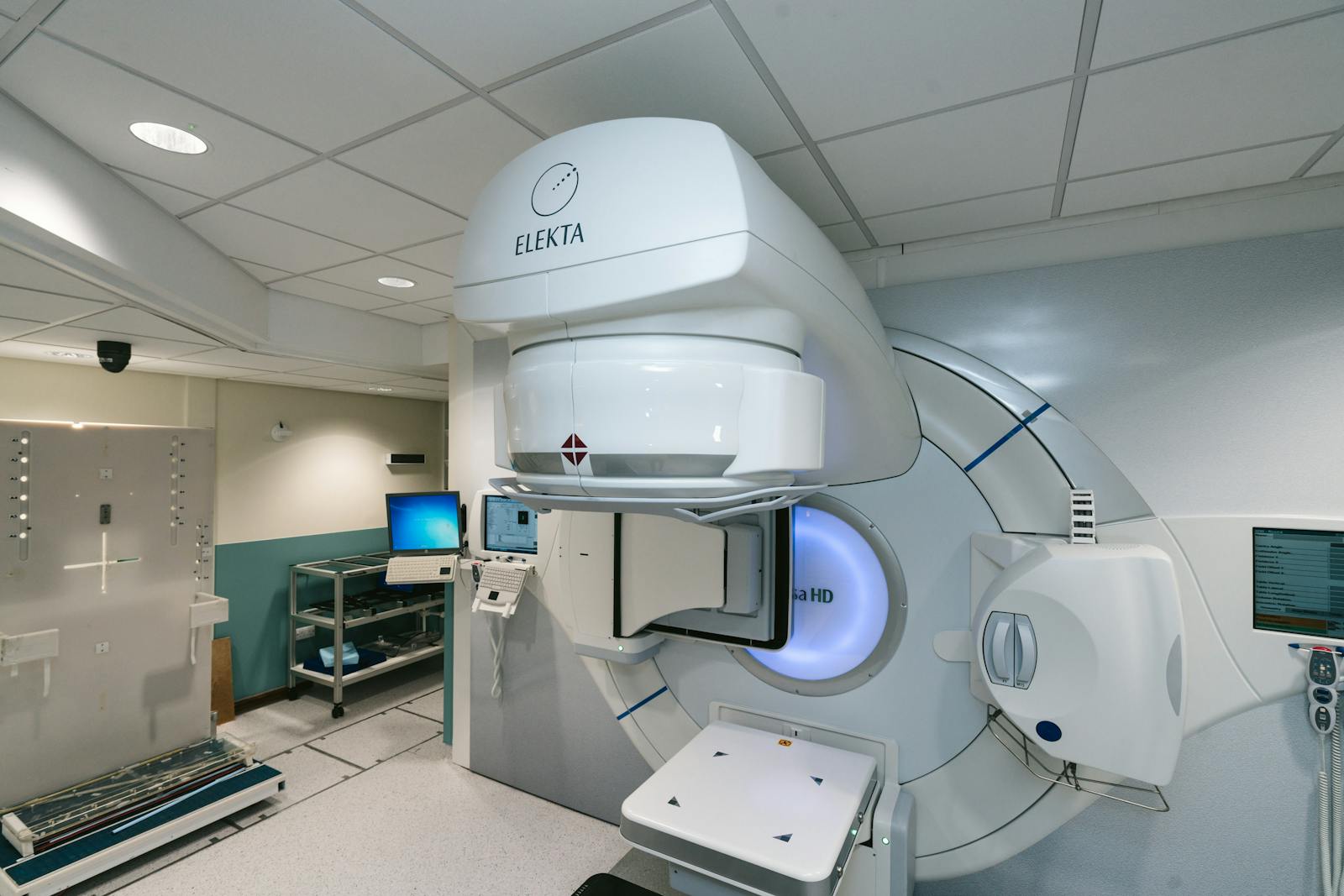
Researchers from Brigham and Women’s Hospital, a founding member of the Mass General Brigham healthcare system, have used artificial intelligence tools to accelerate the understanding of the risk of specific cardiac arrhythmias when various parts of the heart are exposed to different thresholds of radiation as part of a treatment plan for lung cancer. Their results are published in JACC: CardioOncology.
“Radiation exposure to the heart during lung cancer treatment can have very serious and immediate effects on a patient’s cardiovascular health,” said corresponding author Raymond Mak, MD, of the Department of Radiation Oncology at Brigham and Women’s Hospital. “We are hoping to inform not only oncologists and cardiologists, but also patients receiving radiation treatment, about the risks to the heart when treating lung cancer tumors with radiation.”
The emergence of artificial intelligence tools in health care has been groundbreaking and has the potential to positively reshape the continuum of care, including informing treatment plans for patients with cancer. Mass General Brigham, as one of the nation’s top integrated academic health systems and largest innovation enterprises, is leading the way in conducting rigorous research on new and emerging technologies to inform the responsible incorporation of AI into care delivery.
For patients receiving radiation therapy to treat non-small cell lung cancer (NSCLC), arrhythmias or irregular rhythms of the heart can be common. Because of the close proximity of the heart to the lungs and with NSCLC tumors being near or around the heart, the heart can receive collateral damage from radiation dose spillage meant to target the cancer tumors. Prior studies have found that this type of exposure to the heart is associated with general cardiac issues. However, this nuanced study demonstrated that the risk for different types of arrhythmias can vary significantly based on the pathophysiology and cardiac structures that are exposed to different levels of radiation.
In order to classify the types of arrhythmias that are associated with cardiac substructures receiving radiation, researchers conducted a retrospective analysis on 748 patients in Massachusetts, who were treated with radiation for locally advanced NSCLC. The arrhythmia subtypes cataloged included atrial fibrillation, atrial flutter, other supraventricular tachycardia, bradyarrhythmia, and ventricular tachyarrhythmia or asystole.
The team’s statistical analyses indicated that about one out of every six patients experienced at least one grade 3 arrhythmia with a median time of 2.0 years until the first arrhythmia. Grade 3 classifications are considered serious events that likely need intervention or require hospitalization. They also found that almost one-third of patients who experienced arrhythmias also suffered from major adverse cardiac events.
The arrhythmia classes outlined in the study did not entirely encompass the range of heart rhythm issues that are possible, but the authors note that these observations still create a better understanding of the possible pathophysiology pathways and potential avenues for minimizing cardiac toxicity after receiving radiation treatment. Their work also offers a predictive model for dose exposure and the type of expected arrhythmia.
For the future, the researchers believe that radiation oncologists should collaborate with cardiology experts to better understand the mechanisms of heart injuries and their connection to radiation treatment. In addition, they should take advantage of modern radiation treatment to actively sculpt radiation exposure away from the specific cardiac regions that are at high risk for causing arrhythmias. According to Mak, this study, alongside previous research, will help with surveillance, screening, and informing radiation oncologists on which parts of the heart to limit radiation exposure to, and in turn, mitigate complications.
“An interesting part of what we did was leverage artificial intelligence algorithms to segment structures like the pulmonary vein and parts of the conduction system to measure the radiation dose exposure in over 700 patients. This saved us many months of manual work,” said Mak. “So, not only does this work have potential clinical impact, but it also opens the door for using AI in radiation oncology research to streamline discovery and create larger datasets.”
Source: BWH
Source link
Health & Society
Beer, but warm – it helps the kidneys

Is it true that beer is good for the kidneys? Beer is associated with entertainment, evening gatherings and relaxation. At the same time, many myths and claims accompany this popular drink, including claims that it is good for kidney health. Let’s look at what is actually known about the effect of beer on the organs of the genitourinary system.
The myth of the benefits of beer for the kidneys The idea that beer can have a positive effect on kidney health is due to the content of antioxidants in the drink, as well as its diuretic effect. However, it should be clarified that beer consumption is not associated with benefits for kidney function.
Reality and negative impact: Dehydration. Beer, like any alcoholic drink, has a dehydrating effect on the body. Alcohol suppresses the production of vasopressin, a hormone that regulates fluid levels in the body. This can lead to more frequent urination and, as a result, dehydration. Dehydration can negatively affect kidney function and overall health. Adverse effects on the urinary tract. Beer can irritate the urinary tract, which can contribute to urinary tract infections. Alcohol can also make existing kidney problems worse. Effect on blood pressure. Excessive consumption of alcohol, including beer, can raise blood pressure. A constant increase in blood pressure can negatively affect kidney function.
Reasonable consumption
It is important to emphasize that moderate and infrequent consumption of beer, like other alcoholic beverages, often avoids serious health problems. However, avoid excessive consumption and remember that beer is not particularly good for the kidneys.
Other myths about beer
Beer can be drunk in large quantities because it contains a lot of water: Despite the high water content of beer, the alcohol in it has a dehydrating effect, which can lead to dehydration, especially if consumed in excess.
Beer is a good way to relax and de-stress: Although many may feel relaxed after drinking alcohol, this is often a temporary effect. Long-term or excessive alcohol consumption can actually worsen stress and mental health effects.
Beer dissolves fat: Many people believe that beer helps dissolve fat and helps flush it out of the body. However, this is not true. Beer, like other alcoholic beverages, contains calories and can promote fat storage.
Beer is a good source of vitamins and minerals: Beer contains some vitamins and minerals, but it is not the best source of nutrients. An overdose of alcohol can negatively affect the absorption of certain nutrients.
If you have kidney problems, blood pressure or other chronic diseases, it is advisable to consult your doctor before making changes to your diet or drinking habits. In general, it is better to maintain a healthy and balanced lifestyle without alcohol to maintain the health of the genitourinary system and the whole body. The article is for informational purposes only and is not a recommendation or a substitute for professional consultation.
Illustrative Photo by RDNE Stock project: https://www.pexels.com/photo/friends-toasting-their-drinks-6174129/
-

 EU & the World6 days ago
EU & the World6 days agoDoes Travis Kelce Appear in Swift’s ‘I Can Do It With a Broken Heart’ Music Video?
-

 Health & Society6 days ago
Health & Society6 days agoPope Francis calls on religions to unite to reduce demand for drugs
-

 Politics6 days ago
Politics6 days agoPoland’s Former Prime Minister Mateusz Morawiecki Eyes Leadership of European Conservatives and Reformists
-
EU & the World6 days ago
Mike Lynch Yacht Update: Fifth Body Recovered Off Coast of Sicily
-

 EU & the World6 days ago
EU & the World6 days agoAshanti & Nelly Welcome First Child Together & Reveal Baby Boy’s Name
-

 Sports6 days ago
Sports6 days agoAtalanta: PSG-Lookman, there is news
-
Travel7 days ago
New Brussels to Venice night train: The 9 cities en route, what it will cost and how to book
-
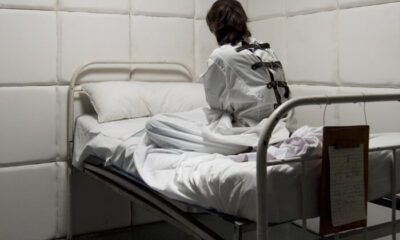
 Health & Society6 days ago
Health & Society6 days agoSexual abuse, electric shocks, chemical restraints in Mental Health Care, report finds



